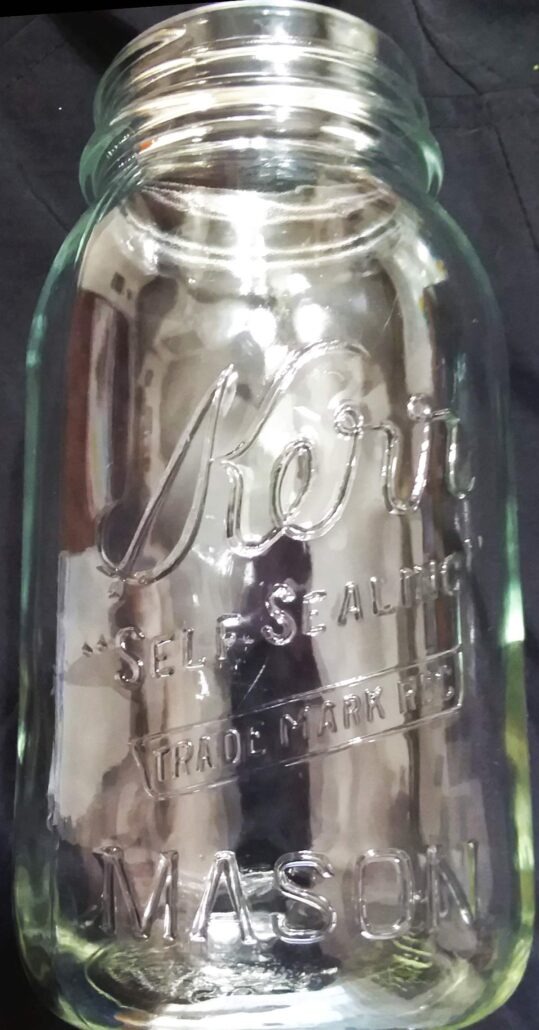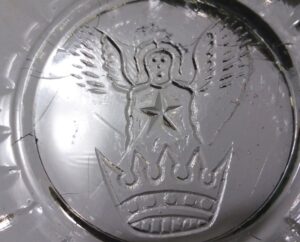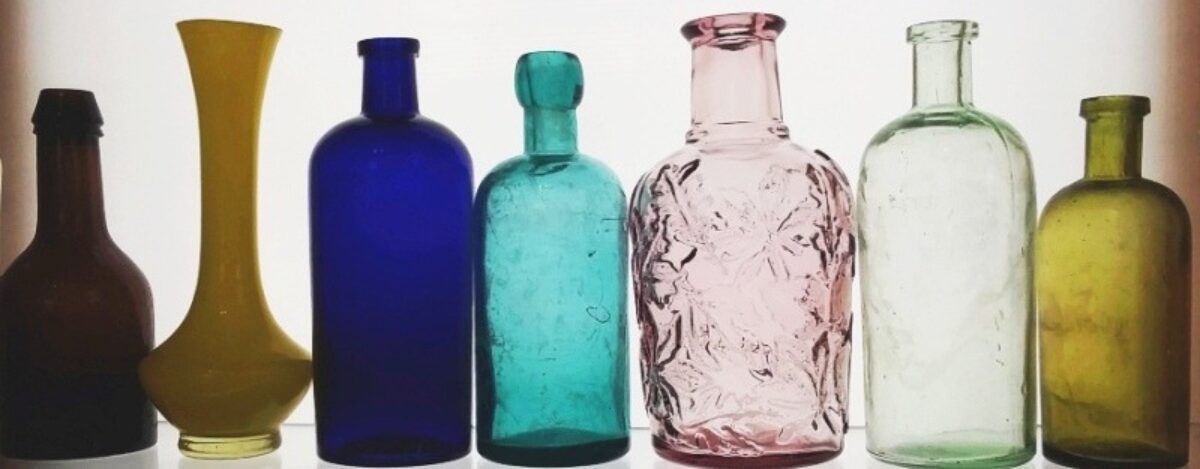Kerr Glass Manufacturing Company (“Corporation” after 1927), renamed Kerr Group, Inc, in 1992
Portland, Oregon (1904-1912, offices only)
Los Angeles, CA (1919-1992, offices only)
Kerr Group, Inc. (1992-1996)
Businessman and entrepreneur Alexander Hewitt Kerr (September 4, 1862 – February 9, 1925) organized this company in Portland, Oregon in 1903 under the name Hermetic Fruit Jar Company. The official name was changed in 1904 to Kerr Glass Manufacturing Company. Kerr did not actually manufacture glass during the earliest years, but was, more accurately, a sales company/distributor during the period from 1904 to 1909 and had jars made for them (with the Kerr name embossing) by other glass companies.
The first jars made for Kerr were evidently the KERR –ECONOMY brand jars, and that type was made in the earliest years (c.1903-1909) by Illinois-Pacific Glass Company of San Francisco, and also by the Hazel-Atlas Glass Company (based in Washington, PA and later at Wheeling WV) from 1906 to 1909.
On February 15, 1909, Kerr purchased the Altoona Co-Operative Glass Company of Altoona, Kansas (which had recently went bankrupt) and within a month or so KERR brand fruit jars were being produced at that location.
GLASS MANUFACTURING PLANTS
Kerr Glass has had glass manufacturing plants located at: Altoona, Kansas (from 1909-1912); Sand Springs, Oklahoma (1912 to 1992); Huntington, West Virginia (from 1933; this plant closed December 7, 1982 – information from Mike Harmon); Santa Ana, California (1943-1992); Plainfield, Illinois (former Hazel-Atlas plant that started production August 16, 1957 – operated 1964-1996 under Kerr); Dunkirk, Indiana (originally the factory of Hart Glass Mnfg Co. and acquired by Armstrong Cork Co. in 1938, purchased by Kerr in 1968); Millville, New Jersey (from 1968- see more information on the Millville location at the Whitall Tatum Company page); Wilson, North Carolina (built 1978, acquired by National Can Corporation in 1983), Maywood, California (acquired in 1983 and included the same year in a group of four Kerr factories acquired by National Can) and Waxahachie, Texas (from 1968 to 1983 when acquired by National Can).
The Kerr company is best known for being producers of several kinds of fruit jars used for home canning. They also produced large quantities of other types of glass containers, especially in later years.
Their most famous and important fruit jar in the early years, as noted above, was their “Kerr – Economy” jar, made in large quantities at their plants in Altoona, KS and Sand Springs, OK. Many of the earlier ECONOMY types are marked with the words “KERR GLASS MFG. CO” embossed on the bottom, and in general those jars probably date mostly from about 1904 to circa 1920.
“AHK” mark
The AHK trademark was first used by Alexander H. Kerr & Company beginning September 9, 1944. The trademark was officially registered on April 26, 1949. The mark was used mostly on packer ware (wide mouth jars and jugs for food products) and most of those containers do not bear date codes so it is often difficult to date examples without other clues (such as original product labels).
After about 1969 (perhaps coinciding with the purchase by Kerr of the Whitall Tatum/Armstrong plant at Millville, NJ), the AHK mark was also used on beverage bottles, which typically DO carry date codes.
Here is a webpage with trademark information on the AHK mark: https://uspto.report/TM/71506173
ADVERTISEMENT
Other fruit jars made in later years include their “Self Sealing” Mason, which was made in huge numbers, in several sizes and a number of different types (embossing variations) including the “wide mouth” varieties. For anyone learning more about the different Kerr jar types and their market values, I would encourage them to consult the value pricing guide used by most advanced fruit jar collectors: the so-called “RED BOOK” of fruit jars.

Kerr manufactured a line of jelly glasses over many years, including small glasses (packer jars) that look like drinking glasses, and others that are shaped more like low, rounded custard or dessert bowls. On some of the earlier ones (not sure about the timeline) a so-called “Angel over crown” logo was marked on the bottom. Later variants of those types of jars may bear only a mold number, or the brand name “Kerr” in cursive lettering along with a mold number.

The Kerr glass plants were bought by Ball Corporation in 1992. Ball later left the glass container business altogether, and sold the plants to Saint-Gobain Containers. S-G’s North American container division later became known as Verallia North America, which was then sold to Ardagh Group in April 2014. The rights to the “Kerr” brand name, as used on currently-made fruit jars, were acquired by the Alltrista Corporation (a subsidiary of Ball Corporation) which later became known as the Jarden Corporation (Jarden Home Brands).
Alltrista acquired the assets of Kerr Group, Inc. in March of 1996, in effect, ending the company name “KERR” as an actual glass manufacturer. More information on the Alltrista timeline here: Alltrista Corporation
Update, 2018: Jarden Home Brands (Hearthmark LLC), a subsidiary of NEWELL BRANDS, continues to sell new glass canning jars with the KERR and BALL brand names embossings. It is my understanding that many, if not most, of these recent jars made FOR Jarden Home Brands are being made at the Winchester, Indiana plant owned now by Ardagh Group, North America. (See Ball Bros Glass Company, Anchor Hocking Glass Corporation, and Ball Perfect Mason).
Also, see the entries on some other fruit jars such as the Wax Sealer style jars, and Patent November 30th 1858 jars, and the page on Hazel-Atlas Glass Company.
For an extensive list of glass manufacturers’ marks on bottles, fruit jars, insulators, tableware and other glass items, please click here to go to the Glass Bottle Marks pages (page one).
For more detailed information on Kerr’s Millville, New Jersey glass factory location, (where most of the KERR glass electrical insulators were made), please see my article on Whitall Tatum Company.
Please click here to go to my Home Page.
For much more detailed background information on Kerr Glass Manufacturing Corporation, their marks and factory history, please check out this article written by researcher/archaeologist Bill Lockhart with input from Bill Schriever, Bill Lindsey and Carol Serr: https://sha.org/bottle/pdffiles/KerrGlass.pdf
ADVERTISEMENT

